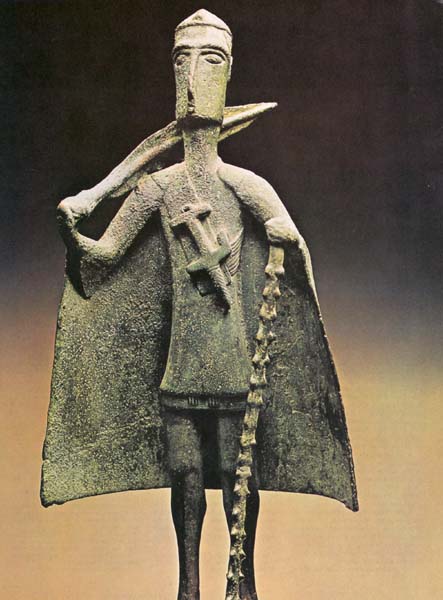Image Details

Mario Carrieri
Known as bronzetti, some 400 such figurines have been found in Sardinia, usually near sacred wells. Exquisitely designed and crafted by the nuraghic people, the bronzetti often depict chieftains, warriors and boats. Some archaeologists believe they exhibit a Phoenician influence because of their similarity to figurines found on the Levantine coast and dated to the 11th century B.C. and later.
Colonized by Phoenicians at least as early as the ninth century B.C., Sardinia holds abundant remnants of Phoenician culture. In order to examine Sardinia’s antiquities, with a special emphasis on the Phoenician presence, Israeli archaeologist Elisha Undner led an expedition to the island’s Phoenician port, Tharros, as described in the accompanying article by volunteer team member Joan S. Scheuer.
